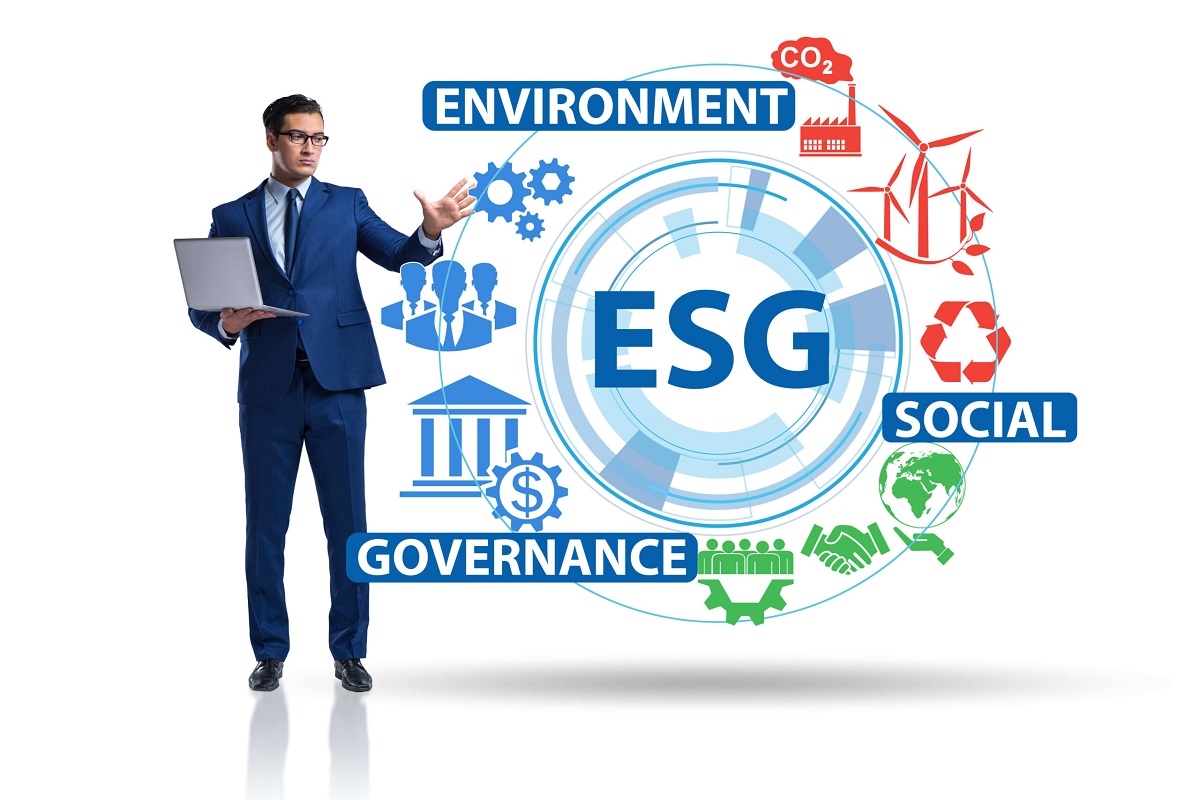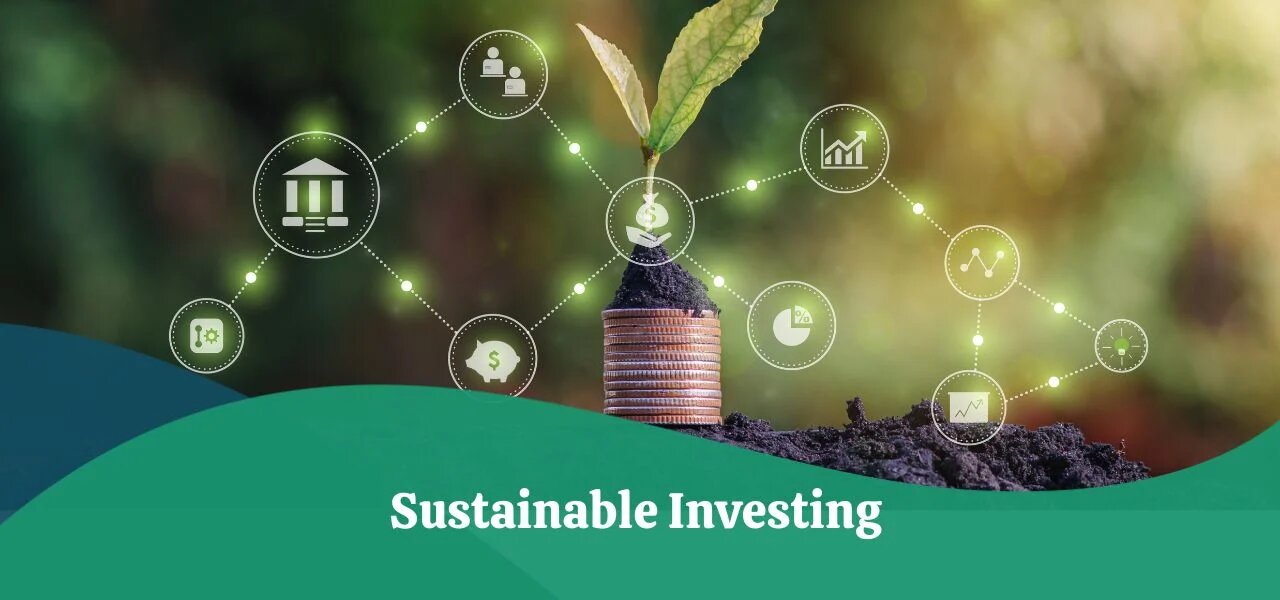Introduction
Welcome to the world of ESG investments – an increasingly popular approach to investing that combines financial returns with environmental, social, and governance considerations. In a rapidly changing world where issues like climate change, social inequality, and corporate governance are gaining prominence, more and more individuals and institutions are turning to ESG investments as a way to align their financial goals with their values.
ESG, which stands for Environmental, Social, and Governance, refers to a set of criteria used to evaluate the sustainability and ethical impact of an investment in addition to its financial performance. ESG investments take into account factors such as a company’s carbon footprint, labor practices, board diversity, and transparency in decision-making. By considering these non-financial indicators, ESG investments aim to support companies that demonstrate responsible business practices and contribute to a more sustainable and equitable world.
The importance of ESG investing cannot be overstated. As the global community grapples with challenges like climate change, social justice, and corporate accountability, investors are realizing the need to go beyond traditional financial metrics and consider broader societal and environmental impacts. ESG investments provide an opportunity to support companies that are actively working towards positive change, while also potentially generating competitive financial returns.
ESG investments have gained significant traction in recent years. According to a report by the Global Sustainable Investment Alliance, global sustainable investment assets reached $30.7 trillion in 2018, representing a 34% increase since 2016. This surge in interest is driven by both individual investors seeking to align their portfolios with their values and institutional investors recognizing the long-term risks associated with unsustainable or socially irresponsible practices.
As the popularity of ESG investments continues to grow, it is essential to understand the factors and criteria that drive these investment decisions. Investors evaluate ESG investments based on a range of indicators, such as a company’s impact on climate change, labor practices, supply chain management, product safety, board diversity, and transparency. These factors help investors assess a company’s long-term sustainability and its ability to mitigate risks associated with environmental, social, and governance issues.
In the following sections, we will delve deeper into the importance of ESG investments, explore the different ESG factors and criteria, discuss the benefits and risks associated with ESG investments, review various types of ESG investments, and provide insights on evaluating these investments. By the end, you will have a comprehensive understanding of ESG investments and their role in shaping the future of responsible investing.
What is ESG?
ESG, which stands for Environmental, Social, and Governance, is a framework used to evaluate the sustainability and ethical impact of an investment. It considers a range of factors beyond financial performance to assess how a company operates and its impact on the environment, society, and corporate governance.
Let’s break down each component of ESG:
- Environmental: This aspect focuses on a company’s impact on the environment. It considers factors such as carbon emissions, energy efficiency, waste management, water usage, and biodiversity conservation. Companies that prioritize environmental sustainability are likely to be more resilient in the face of future environmental challenges.
- Social: The social component of ESG examines a company’s impact on society. It includes labor practices, human rights, employee diversity and inclusion, community relations, and consumer protection. Companies demonstrating a commitment to social responsibility are more likely to earn the trust and loyalty of consumers and employees.
- Governance: Governance pertains to a company’s internal practices and the way it is managed. It encompasses board structure, executive compensation, transparency, shareholder rights, and ethical business practices. Strong governance ensures that companies are accountable and responsible in their decision-making, reducing the risk of corporate scandals and financial mismanagement.
ESG investing recognizes that companies with strong environmental, social, and governance practices are more likely to generate positive long-term financial returns. By integrating ESG factors into investment decisions, investors can align their portfolios with their values while potentially benefiting from companies that exhibit sustainable and responsible practices.
It is important to note that ESG investments are not limited to a specific asset class or investment strategy. ESG principles can be applied to various investment vehicles, including stocks, bonds, mutual funds, exchange-traded funds (ETFs), and alternative investments. Investors have the flexibility to choose investments that align with their values and financial objectives.
ESG investing has evolved from an ethical consideration to a mainstream investment approach. It is driven by the growing recognition that factors beyond financial performance can significantly impact a company’s long-term success and the overall stability of the global economy. As a result, more investors are incorporating ESG factors into their investment strategies, and companies are becoming more attentive to their environmental, social, and governance practices.
In the following sections, we will explore the importance of ESG investing, the specific factors and criteria evaluated, the benefits and risks associated with ESG investments, different types of ESG investments, and how to evaluate them. By gaining a comprehensive understanding of ESG, you will be well-equipped to navigate the world of socially responsible investing.
The Importance of ESG Investing
ESG investing has gained significant importance in recent years due to several key reasons. One of the primary drivers is the increasing recognition that environmental, social, and governance factors can significantly impact a company’s long-term performance and sustainability.
First and foremost, ESG investing aligns investors’ portfolios with their values and beliefs. It allows investors to support companies that demonstrate responsible business practices and contribute positively to society and the environment. Investors who prioritize ESG considerations can ensure that their money is being channeled towards companies that promote sustainability, diversity, and ethical practices.
Furthermore, ESG investing is crucial in managing risk and preserving long-term value. Companies that ignore ESG factors may face reputational damage, legal issues, or operational disruptions. By integrating ESG analysis into investment decisions, investors can identify potential risks and avoid companies that may be susceptible to financial or regulatory issues in the future.
ESG investing also provides an opportunity for investors to have a positive impact on the world. By supporting companies that prioritize environmental initiatives, social equity, and strong governance, investors can drive positive change and contribute to the transition towards a more sustainable and equitable economy.
Institutional investors such as pension funds, endowments, and insurance companies are increasingly considering ESG factors in their investment decisions. This trend is driven by the recognition that companies with strong ESG practices are more likely to generate sustainable, long-term returns. Incorporating ESG analysis into investment strategies can help institutional investors meet their fiduciary responsibilities and mitigate potential risks associated with unsustainable or socially irresponsible practices.
ESG investing also reflects the growing demand from individual investors for investment options that align with their values. Today’s investors are more conscious about the impact of their investments and are increasingly seeking opportunities to make a positive difference in the world. By incorporating ESG factors into investment decisions, individuals can ensure that their money is working towards causes and issues that matter to them personally.
Companies and investment managers that prioritize ESG considerations are also more likely to attract top talent and maintain strong relationships with stakeholders. In an era of heightened corporate scrutiny, companies that demonstrate responsible practices are more likely to foster trust and loyalty among employees, customers, and communities.
As ESG investing continues to evolve and gain prominence, it is increasingly seen as a standard practice rather than a niche approach. Investors and businesses alike are recognizing the importance of environmental stewardship, social responsibility, and good governance as pillars for long-term success and sustainability.
In the following sections, we will explore the specific factors and criteria used to evaluate ESG investments, as well as the benefits and risks associated with this investment approach. By gaining a comprehensive understanding of ESG investing, investors can make informed decisions that align with their values and financial goals.
ESG Factors and Criteria
When evaluating ESG investments, a range of factors and criteria are taken into account to assess a company’s sustainability, ethical practices, and governance. These factors provide investors with insights into how well a company aligns with ESG principles and how it manages potential risks and opportunities related to environmental, social, and governance issues.
Let’s delve into some of the key ESG factors and criteria:
- Environmental Factors: These factors focus on a company’s impact on the environment. Key environmental considerations include a company’s carbon emissions, energy efficiency, waste management practices, water usage, deforestation policies, and efforts to mitigate climate change. Companies that prioritize environmental sustainability and resource conservation are more likely to attract ESG-focused investors.
- Social Factors: Social factors encompass a company’s impact on society, including its labor practices, human rights record, community engagement, customer relations, product safety, and diversity and inclusion efforts. ESG-conscious investors pay attention to companies that treat their employees and customers fairly, prioritize community well-being, and exhibit strong social responsibility.
- Governance Factors: Governance factors assess a company’s internal practices, transparency, and ethical conduct. These factors include board structure and independence, executive compensation, shareholder rights, anti-corruption measures, and overall corporate governance practices. Companies with strong governance practices are more likely to inspire trust and confidence from investors.
While these factors are generally considered when evaluating ESG investments, specific criteria may vary depending on the industry, region, and investor preferences. Experts within the ESG investing field have developed various frameworks and standardized metrics to assist investors in assessing ESG performance. Some prominent frameworks include the widely used Global Reporting Initiative (GRI), the Sustainability Accounting Standards Board (SASB) standards, and the United Nations Sustainable Development Goals (SDGs).
It is important to note that while ESG factors provide valuable insights, they may not always be quantifiable in the same way financial metrics are. ESG information is typically reported by companies voluntarily or as mandated by national regulations. However, efforts to standardize ESG reporting are becoming more prevalent to ensure transparency and comparability among companies.
Investors also employ various strategies to integrate ESG factors into their investment decisions. These can include positive screening, where companies that meet specific ESG criteria are included in the investment portfolio, and negative screening, where companies involved in activities contrary to ESG principles are excluded. Additionally, investors may engage with companies through active ownership strategies, utilizing their influence as shareholders to push for positive change and improved ESG practices.
ESG factors and criteria are not used to make absolute judgments on a company’s sustainability or ethical conduct. Rather, they provide a framework for evaluating a company’s commitment to ESG principles and identifying areas where improvement or mitigation of risks may be required. By considering these factors, investors can align their portfolios with their values and contribute to a more sustainable and responsible global economy.
In the next sections, we will explore the benefits and risks associated with ESG investing, as well as different types of ESG investments and how to evaluate them. By gaining a comprehensive understanding of ESG, investors can make informed decisions that support their financial goals and contribute to positive change.
The Benefits and Risks of ESG Investments
ESG investments offer a range of benefits for investors, society, and the environment. Furthermore, they also come with certain risks that should be carefully considered before making investment decisions.
Let’s explore the benefits and risks of ESG investments:
Benefits of ESG Investments:
- Sustainable Long-Term Returns: Companies that prioritize ESG factors tend to have a more sustainable business model, which can contribute to stable long-term financial performance. By considering ESG criteria, investors can potentially identify companies with a competitive advantage in managing environmental and social risks, leading to healthier financial returns.
- Risk Management: ESG investing helps investors identify companies that may be vulnerable to environmental, social, or governance-related risks. By taking ESG factors into account, investors can mitigate risks associated with issues such as climate change, regulatory compliance, labor disputes, and reputational damage.
- Alignment with Values: ESG investments allow investors to align their portfolios with their personal values and beliefs. By supporting companies that demonstrate responsible environmental, social, and governance practices, investors can contribute to positive societal and environmental change.
- Enhanced Corporate Transparency: ESG investing encourages companies to improve their reporting practices and enhance transparency. When companies disclose ESG information, investors and stakeholders can gain a deeper understanding of their sustainability efforts, fostering greater accountability and driving positive change.
Risks of ESG Investments:
- Data Quality and Standardization: ESG data can be challenging to collect and verify, as it relies heavily on company reporting. Inconsistencies in data quality and reporting standards may impact the accuracy and reliability of ESG assessments and investment decisions.
- Industry-Specific Challenges: Certain industries face unique ESG challenges, such as energy companies dealing with carbon emissions or technology companies with data privacy concerns. Investors must consider the specific risks and opportunities associated with each industry when evaluating ESG investments.
- Market Volatility: Like any investment, ESG investments are subject to market fluctuations and volatility. ESG-focused companies may experience periods of underperformance due to market conditions or industry-specific factors.
- Greenwashing: Greenwashing refers to the practice of companies offering misleading or unsubstantiated claims about their environmental or social practices to appear more ESG-friendly than they actually are. This poses a risk for investors who may unknowingly invest in companies that do not genuinely prioritize ESG principles.
Despite the potential risks, the growing demand for ESG investments suggests a shift in investor priorities toward long-term sustainability and responsible investing. Increasing regulatory scrutiny and industry initiatives are working toward addressing these risks and enhancing the credibility of ESG investing.
Investors should carefully evaluate the benefits and risks associated with ESG investments, taking into account their investment objectives, risk tolerance, and individual values. Conducting thorough due diligence and seeking guidance from financial advisors or ESG specialists can help investors make informed decisions and navigate the evolving landscape of ESG investing.
In the following sections, we will explore different types of ESG investments, how to evaluate their performance, and insights on the future of ESG investing. By gaining a comprehensive understanding of these aspects, investors can maximize the potential benefits of ESG investments while managing the associated risks.
Types of ESG Investments
ESG investments come in various forms, offering investors a range of options to align their portfolios with their values and financial goals. These investments incorporate environmental, social, and governance considerations while aiming to generate competitive financial returns. Let’s explore some of the common types of ESG investments:
- Socially Responsible Investing (SRI): SRI is a broad term that encompasses various investment approaches. It involves selecting investments based on both financial return objectives and specific social or ethical values. SRI investors may avoid industries such as tobacco or weapons, or actively seek companies that have positive social or environmental impacts, like renewable energy or impact-driven organizations.
- Sustainable Funds: Sustainable funds, also known as socially responsible funds or green funds, are investment vehicles that focus on companies with strong ESG performance. These funds typically have comprehensive ESG screening processes and may exclude companies involved in controversial industries or those that fail to meet specific sustainability criteria. Sustainable funds may invest in a mix of stocks, bonds, or other financial instruments tailored to ESG goals.
- Impact Investing: Impact investing aims to generate positive social and environmental impacts alongside financial returns. Investors actively seek opportunities to allocate capital to companies, organizations, or projects that address social or environmental challenges. Impact investments can span various sectors, such as clean energy, affordable housing, sustainable agriculture, and healthcare access, and are evaluated based on their measurable social and environmental outcomes.
- Green Bonds: Green bonds are fixed-income securities issued by governments, municipalities, or corporations to finance projects with positive environmental or climate benefits. The proceeds from green bonds are allocated to projects such as renewable energy development, energy efficiency initiatives, or green infrastructure projects. Investors in green bonds receive regular interest payments and the return of their principal upon maturity, similar to conventional bonds.
- Ethical Investing: Ethical investing extends beyond financial considerations to incorporate ethical values and principles. It involves selecting investments that align with specific moral or religious beliefs, such as avoiding investments in companies involved in gambling, alcohol, or animal testing. Ethical investors may also consider factors like corporate governance practices, executive compensation, and supply chain transparency.
- ESG Integration: ESG integration involves incorporating ESG factors into traditional investment strategies. Instead of relying solely on financial analysis, investors consider material ESG issues alongside financial metrics when making investment decisions. This approach recognizes that ESG factors can impact a company’s long-term financial performance and risk profile, providing additional insights for investment considerations.
It is important to note that the performance and characteristics of ESG investments may vary based on the specific investment approach, asset class, and the underlying investment strategy. Investors should carefully evaluate the investment objectives, risk profiles, and expected financial returns of each type of ESG investment to ensure alignment with their personal goals.
It is worth mentioning that the ESG investment landscape continues to evolve as more investors demand sustainable and responsible investment options. This has led to an increase in ESG-focused investment products, including ETFs, mutual funds, and private equity funds. The availability and diversity of investment options within the realm of ESG investments continue to expand, providing investors with greater opportunities to craft portfolios that blend financial objectives with their values and beliefs.
In the next sections, we will discuss how to evaluate ESG investments and explore the future of ESG investing. By understanding the different types of ESG investments, investors can make informed decisions that align with their financial goals and ESG criteria.
How to Evaluate ESG Investments
Evaluating ESG investments requires a comprehensive understanding of the factors and criteria that drive responsible investing. Investors need to conduct thorough due diligence and consider multiple aspects to determine the suitability and alignment of an investment with their ESG principles and financial objectives. Here are some key considerations when evaluating ESG investments:
- ESG Data and Reporting: Assess the quality, reliability, and transparency of ESG data reported by companies. Look for companies that disclose comprehensive information on their environmental, social, and governance practices. Consider whether the data is independently verified or follows recognized ESG reporting frameworks such as Global Reporting Initiative (GRI) or Sustainability Accounting Standards Board (SASB).
- Industry-Specific Metrics: Recognize that ESG factors and metrics can vary across industries. Understand the specific environmental, social, and governance risks and opportunities associated with the industry in which the company operates. For example, renewable energy companies may have different ESG considerations compared to financial institutions or technology firms.
- Strategic Alignment: Evaluate how well a company’s ESG practices align with your own values and priorities. Consider whether the company addresses key environmental and social challenges, promotes diversity and inclusion, demonstrates strong governance practices, and incorporates sustainable business strategies.
- Engagement and Active Ownership: Assess whether the company actively engages with stakeholders and demonstrates responsiveness to concerns raised by shareholders, employees, and other stakeholders. Companies that prioritize dialogue and engagement tend to be more receptive to ESG considerations and may be more likely to adapt and improve over time.
- Performance Indicators: Examine financial performance metrics alongside ESG indicators to determine the full picture of a company’s potential risk and return profile. Consider how ESG factors can influence financial outcomes and long-term sustainability. Review sustainability reports, impact assessments, and third-party evaluations to gain insights into a company’s ESG performance.
- ESG Integration: Understand how ESG factors are integrated into the investment decision-making process. Evaluate how ESG considerations are weighed in conjunction with financial analysis. Assess whether the investment approach aligns with your desired level of ESG integration, such as negative screening, positive screening, or best-in-class selection.
It is also advisable to seek guidance from financial advisors or ESG specialists who can provide expertise on evaluating ESG investments. They can help analyze ESG data, interpret sustainability reports, and navigate the complexities of responsible investing.
Remember that ESG investing requires a long-term perspective. Companies may be in different stages of their sustainability journey, and their ESG performance can evolve over time. Regular monitoring and ongoing engagement with investee companies are essential to ensure alignment with ESG principles and desired outcomes.
Additionally, keep in mind that ESG evaluations should be part of a broader investment approach that considers traditional financial analysis, risk management, and diversification. Combining ESG factors with financial metrics and adopting a well-rounded investment strategy can help optimize risk-adjusted returns while supporting sustainable and responsible investments.
By carefully evaluating ESG investments based on these considerations, investors can make informed decisions that align with their personal values, financial goals, and desired level of ESG integration. Continually monitoring and reassessing investments based on evolving ESG practices and market conditions is a key part of successful ESG investing.
In the next section, we will explore the future of ESG investing and the potential developments in this dynamic and rapidly growing field.
The Future of ESG Investing
The future of ESG investing looks promising, with increasing momentum and widespread recognition of the importance of sustainability and responsible investing. Here are some key trends and developments that are shaping the future of ESG investing:
- Regulatory Measures: Governments and regulatory bodies worldwide are enacting measures to promote ESG integration and disclosure. These regulations aim to enhance transparency, standardization, and comparability of ESG data, allowing investors to make more informed decisions. As regulatory frameworks continue to evolve, ESG investing is likely to become more ingrained in mainstream investment practices.
- Rise of Impact Investing: Impact investing, which targets investments with measurable social and environmental outcomes, is witnessing significant growth. Investors increasingly recognize the potential for financial returns while addressing global challenges. The focus is shifting beyond risk mitigation to actively seeking investment opportunities that generate positive social and environmental impacts.
- Technology and Data Analytics: Advancements in technology and data analytics are revolutionizing ESG investing. Artificial intelligence, machine learning, and big data are allowing investors to assess ESG factors at scale, extract meaningful insights, and drive informed investment decisions. Innovations in data collection and analysis are likely to further enhance the accuracy and effectiveness of ESG evaluations.
- Stakeholder Engagement: Companies are facing increasing pressure from stakeholders, including customers, employees, and investors, to prioritize sustainability and responsible practices. Investors are actively engaging with companies and using their influence as shareholders to drive positive change. This collective effort is expected to accelerate the integration of ESG considerations into business strategies.
- Integration of ESG and Financial Analysis: The integration of ESG factors into traditional financial analysis is becoming more prevalent. Investors are recognizing that ESG issues have material impacts on a company’s financial performance, risk profile, and long-term value. This integration is expected to continue as the financial industry evolves its approach to risk management and investment decision-making.
- Product Innovation: The range and variety of ESG investment products continue to expand. Investors have access to diverse investment options, including ESG-focused mutual funds, ETFs, and customized portfolios aligned with specific themes or impact goals. Product innovation allows investors to tailor their investment strategies to their desired ESG criteria and financial objectives.
- Heightened Investor Demand: Investor demand for ESG investments continues to rise as individuals and institutions seek to align their portfolios with their values. Millennials and younger generations, in particular, are showing strong interest in sustainable investing, driving the demand for ESG-focused products and influencing investment practices.
The future of ESG investing is characterized by an increasing integration of sustainability considerations, a focus on measurable impact, and advancements in technology and data analytics. Investors are recognizing that ESG factors are vital indicators of a company’s long-term viability and its ability to adapt to societal and environmental changes.
ESG investing is expected to become an integral part of mainstream investing, where ESG factors are fully integrated into investment strategies and investment decisions are guided by both financial and sustainability considerations. As ESG practices become more deeply ingrained in investment processes, the lines between “conventional” investing and “ESG” investing are likely to blur.
Furthermore, the future of ESG investing holds the potential for collaborative efforts among investors, companies, governments, and other stakeholders to create systemic change. By working together, these stakeholders can drive industry standards, incentivize sustainable practices, and contribute to a more inclusive, equitable, and environmentally responsible global economy.
As ESG investing continues to evolve, staying informed about ESG developments, engaging in ongoing learning, and actively participating in the sustainable investing ecosystem will be key for investors looking to navigate the future of responsible investing.
With a comprehensive understanding of ESG investments, evaluation criteria, and future trends, investors can make informed decisions that align with their values and contribute to a sustainable and responsible future.
Conclusion
ESG investments have emerged as a robust approach to aligning financial goals with environmental, social, and governance considerations. With the growing recognition of the importance of sustainability and responsible investing, individuals and institutions have embraced ESG investments as a means to generate financial returns while making a positive impact on the world.
Throughout this article, we explored the various aspects of ESG investments, including what ESG entails, the importance of ESG investing, the factors and criteria evaluated, the benefits and risks associated with ESG investments, different types of ESG investments, how to evaluate them, and the future of ESG investing.
By integrating ESG factors into investment decisions, investors can support companies that prioritize sustainability, social responsibility, and good governance. ESG investments provide an opportunity to drive positive change while potentially generating sustainable long-term returns.
It is important to consider multiple aspects when evaluating ESG investments, including ESG data and reporting, industry-specific metrics, strategic alignment with personal values, engagement and active ownership, performance indicators, and the integration of ESG factors into investment strategies.
The future of ESG investing holds immense potential, with regulatory measures, the rise of impact investing, advancements in technology and data analytics, stakeholder engagement, the integration of ESG with financial analysis, product innovation, and heightened investor demand shaping the path forward.
As ESG investing evolves, staying informed about industry developments, remaining engaged with investee companies, and seeking guidance from experts will be crucial for investors seeking to navigate the complex and dynamic landscape of responsible investing.
In conclusion, ESG investments provide an avenue for investors to combine financial returns with environmental, social, and governance considerations. By evaluating ESG factors and embracing responsible investing practices, investors can contribute to a more sustainable, equitable, and inclusive global economy. The future of ESG investing holds immense potential to drive positive change and reshape the investment landscape for generations to come.

























